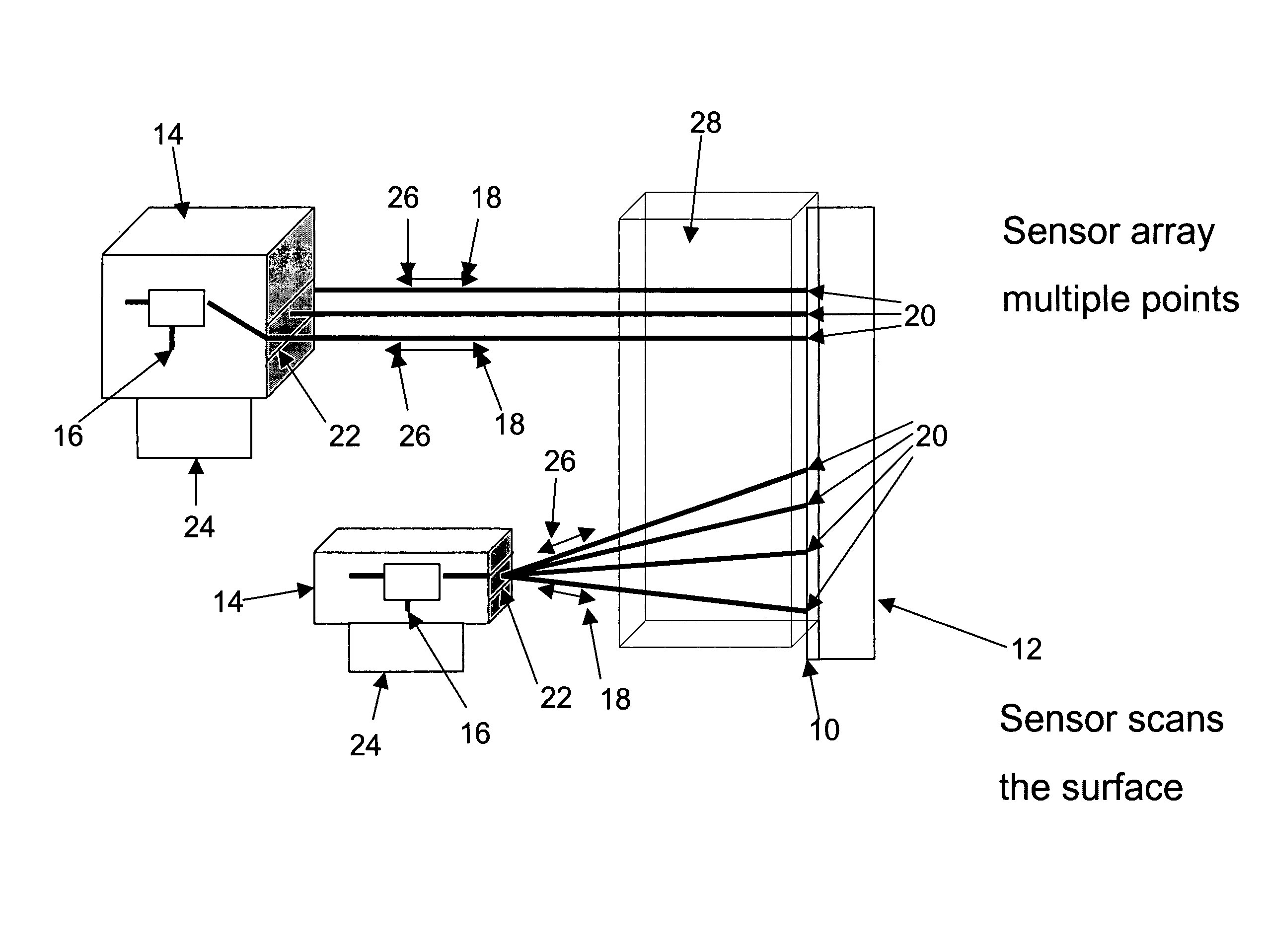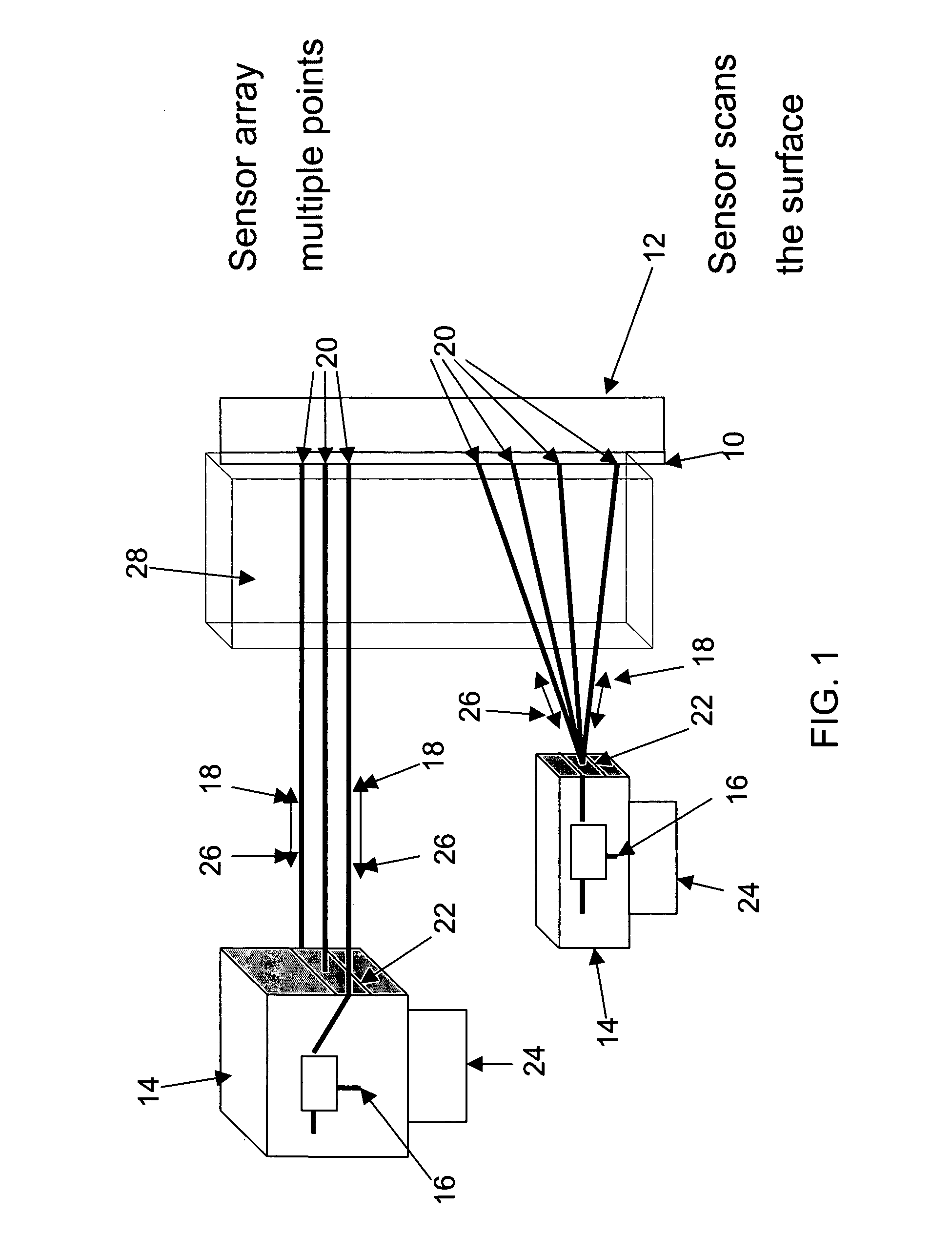Optical underwater acoustic sensor
a technology of optical underwater and acoustic sensor, which is applied in the field of optical underwater acoustic sensor, can solve the problems of limited receiver aperture and bandwidth of these devices, inaccurate data, and limited air-water boundary, and achieve the effect of improving acoustic underwater sensor, low cost and simple installation
- Summary
- Abstract
- Description
- Claims
- Application Information
AI Technical Summary
Benefits of technology
Problems solved by technology
Method used
Image
Examples
Embodiment Construction
[0020]The invention, as embodied herein, comprises an improved acoustic sensor for use in providing the acoustic signature associated with underwater structures such as ship hulls, submarine hulls, and torpedo casings. The acoustic sensor of the present invention employs similar principles to those described in U.S. Pat. No. 6,188,644, which is incorporated by reference herein.
[0021]In general, the present invention is an acoustic sensor used in underwater applications. The sensor comprises a reflective material adhered to the inner side of a structure, such as an outer submarine hull. A laser interferometer is placed on the side of the structure with the reflective material. The laser interferometer sends a plurality of laser beams, in sequence or all at one time, to a plurality of points across the retro-reflective material. The laser beams reflect back to the interferometer, which captures the reflected beams using receiving optics. The phase modulation of the reflected laser bea...
PUM
 Login to View More
Login to View More Abstract
Description
Claims
Application Information
 Login to View More
Login to View More - R&D
- Intellectual Property
- Life Sciences
- Materials
- Tech Scout
- Unparalleled Data Quality
- Higher Quality Content
- 60% Fewer Hallucinations
Browse by: Latest US Patents, China's latest patents, Technical Efficacy Thesaurus, Application Domain, Technology Topic, Popular Technical Reports.
© 2025 PatSnap. All rights reserved.Legal|Privacy policy|Modern Slavery Act Transparency Statement|Sitemap|About US| Contact US: help@patsnap.com



